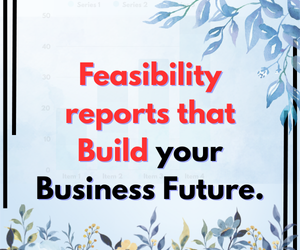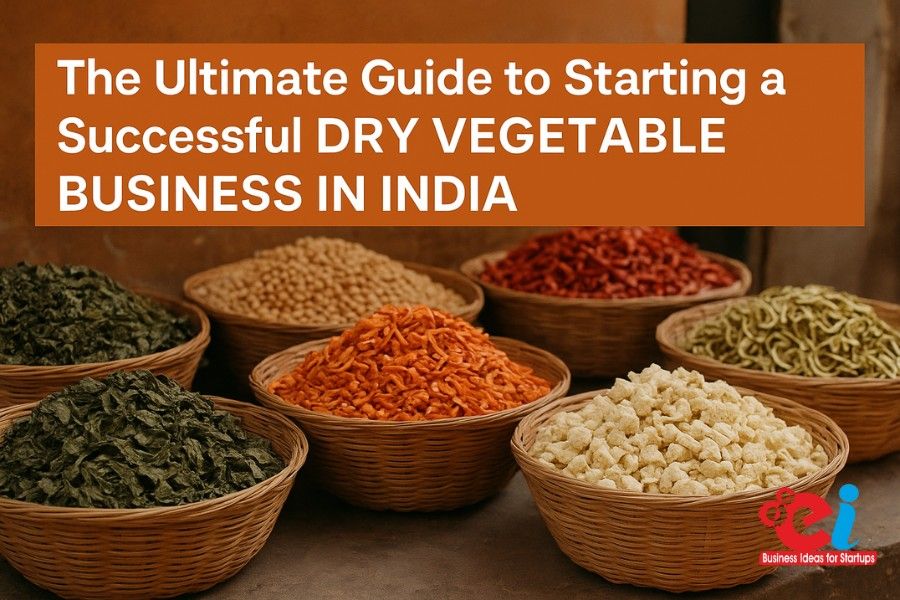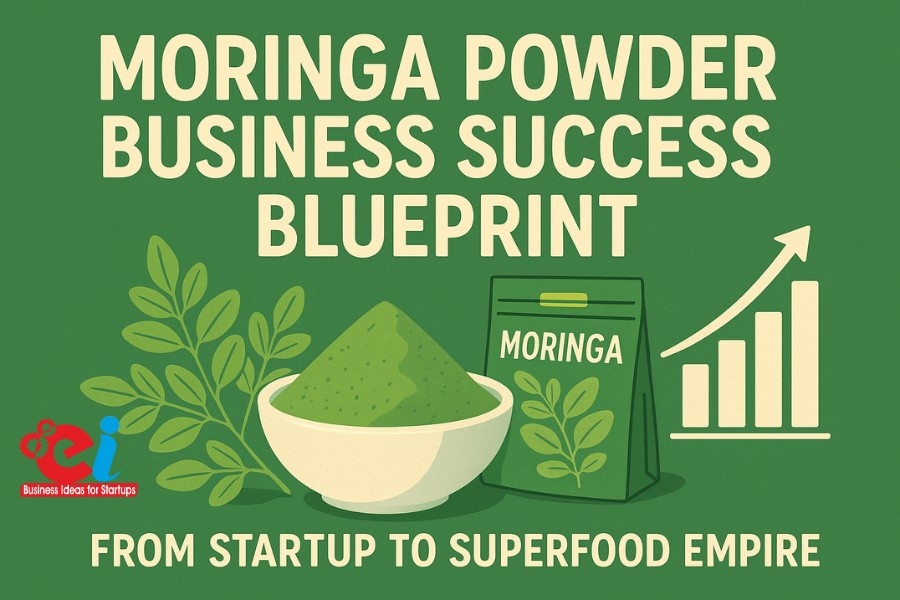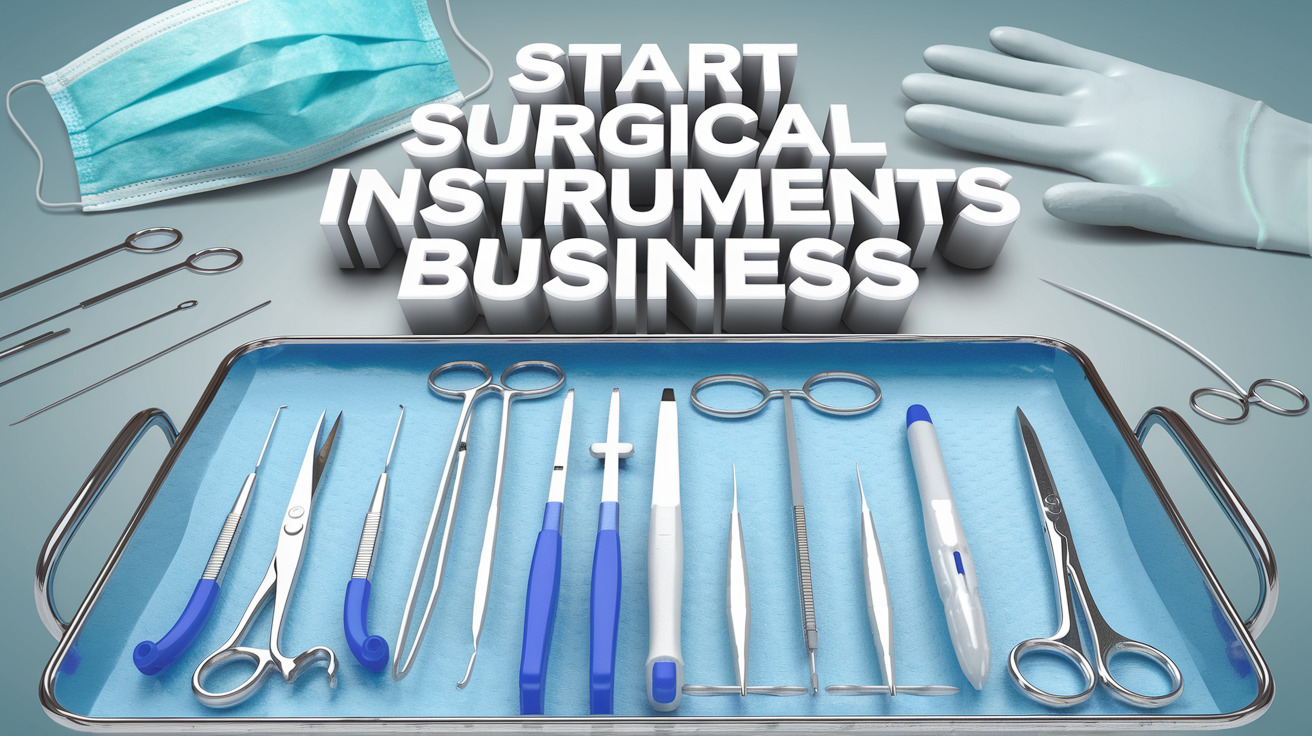Want to know about High Growth Industries for Entrepreneurs? Aside from a few minor exceptions, the fate of most entrepreneurs who subsequently venture into manufacturing will rest mostly on the right product choice that meets the needs of present trends.
This article presents a few niche products in manufacturing that have the potential for great growth and profitability in their respective new start-ups: caramel food colorants, GFRP rebar, and floral foam, among others.
These products suit a very disparate category of needs, from coloring food and beverages to environment-friendly construction reinforcement and floral design essentials.
The entire blog enumerates the manufacturing process, application, market trends, growth, and related start-up considerations with respect to each product. You can also read on how Niir Project Consultancy Services (NPCS) can help you in these ventures to effectively get started.
Read Our Book: Click Here
Caramel Food Colorant: Sweet Opportunity in Food Ingredients
High Growth Industries for Entrepreneurs: What is Caramel Colorant?
Caramel is the type of food colorant that is found in dark brown liquid or powder. It is made by heating carbohydrates (sugars or corn syrup) under controlled conditions. At times, certain shades and intensities of color may require some reagents, such as ammonium compounds or sulfites, to generate.
It is this generation of agent witha stable phenomenon of safety that hazards grades give answers to rich brown shades to food and goods. There are four classes:
- Class I (Plain Caramel): Resulting simply from heating sugar; it is used in confectionery and bakery goods.
- Class II (Caustic Sulfite Caramel): Made by its sulfite compounds to use in beer and spirits.
- Class III (Ammonia Caramel): It is based on ammonium compounds; its usage is found in bakery fillings and soy sauces.
- Class IV (Ammonia-Sulfite Caramel): It uses both ammonia and sulfite; this is the main coloring agent in cola beverages.
Meanwhile, the latest trend among consumers is to move towards clean and naturally derived products, which is an opportunity unique to these new entrants in the industry to explore Class I or organic caramel colorants made from natural sources.
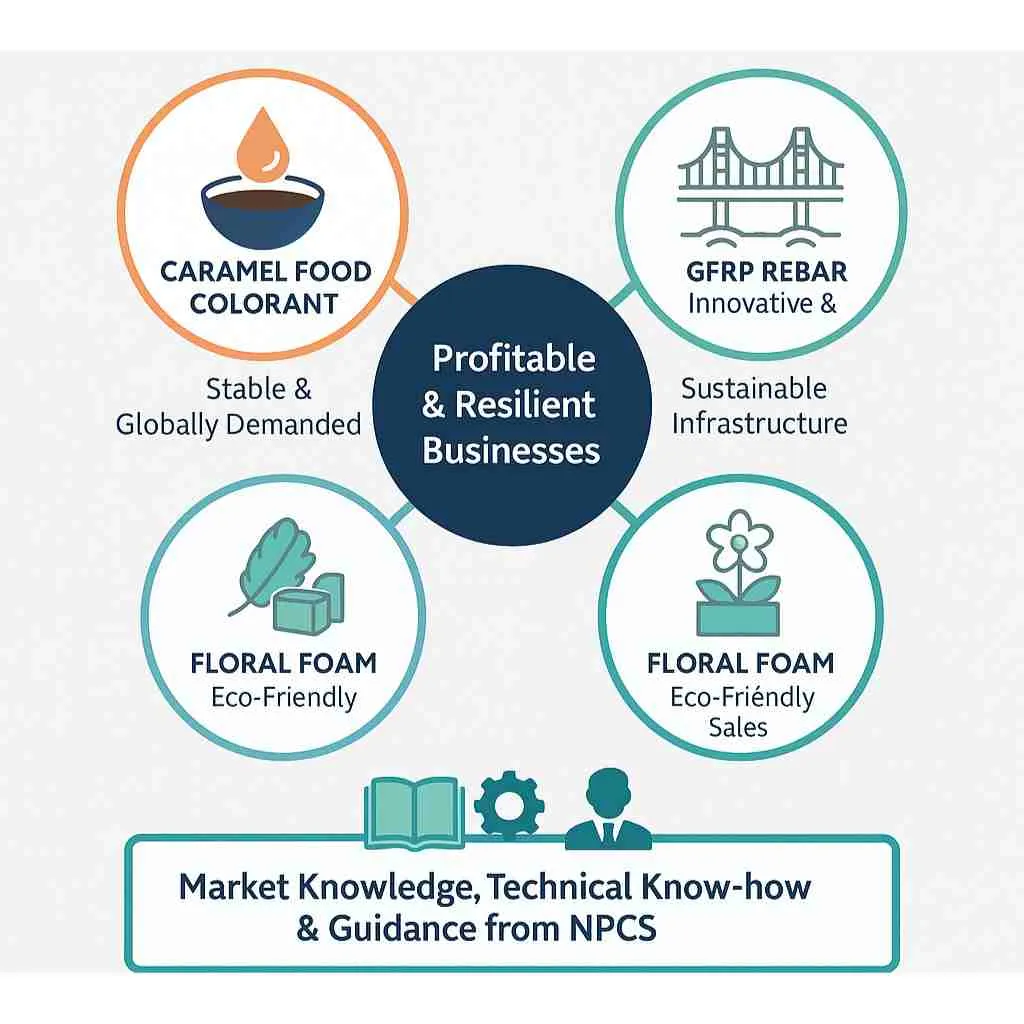
Market Demand and Growth
That caramel colorant is an essential ingredient for the food and beverage industry proving that it is globally profitable. The revenues in the market are expected to rise from nearly 2.5 billion dollars in 2023 to 3.8 billion dollars in 2032 with a compound annual growth rate (CAGR) of 4 to 5% (High Growth Industries for Entrepreneurs).
Key Regional Insights:
North America and Europe own nearly 30% of the full market due to beverages giants.
Asia-Pacific is the fastest-growing region with its rising consumption of packaged foods and beverages.
Latin America and the Middle East can be termed emerging markets, growing in their industries of processed foods.
High Growth Industries for Entrepreneurs: Application Split:
| Application Segment | Share of Market |
|---|---|
| Soft Drinks & Sodas | 35% |
| Bakery & Confectionery | 25% |
| Alcoholic Beverages | 20% |
| Sauces & Condiments | 15% |
| Other Foods | 5% |
Actually, more than one-third of all global usage of caramel color pertains to soft drinks. Next come bakery & confectionery and sauces, thus making for a heterogeneous market application.
Manufacturing Process (High Growth Industries for Entrepreneurs)
The processes in making caramel colorant include heating sugar in reactors and controlling the process. The important steps of this method include:
- Raw Materials: Refined sugar, glucose syrup, or corn syrup; optional reagents may include ammonia or sulphite.
- Caramelisation: Controlled heating is sustained in stainless steel reactors until the colour desired is obtained.
- Cooling and Stabilization: The cooling of the caramelized syrup and diluting it to the standard strength.
- Filtration and Drying: Filter for purity, spray dry (if powder form).
- Packaging: Bulk distribution in food-grade drums or bags.
Business Considerations (High Growth Industries for Entrepreneurs)
From these, entrepreneurs should understand some considerations before they can make good businesses with them:
- Food Safety Compliance: HACCP, GMP, or FSSAI certifications should be obtained.
- Quality Consistency: Colors and strength must remain consistent across batches.
- Raw Material Management: Establish contact with fairly stable sources of sugar contraction.
- Environmental Compliance: Treat effluents & control emissions in a responsible manner.
- Marketing Strategy: Attack local beverage, sauces, & confectionery lines before taking it more global.
Read More: Top Business Ideas of Profitable Manufacturing & Processing Projects
High Growth Industries for Entrepreneurs: Why It is sn Attractive Opportunity
Caramel colorant manufacturing, which earns decent returns and equity on investment with predictable everyday demand and price stability, is a rare business to be in.
Others include premium niches like organic caramel or non-GMO colorants that entrepreneurs may be able to snatch into the emerging health-conscious markets. Its century-old reliance on the food industry guarantees dependability and scalability for new entrant designs.
Glass Fiber Reinforced Polymer (GFRP) Rebar: An Innovation in Construction
What is GFRP Rebar?
GFRP rebar is a composite made predominantly from glass fibre embedded within a polymer matrix (e.g. epoxy or vinyl ester).
This material is produced by active process- the pultrusion, where glass fibres are resin-pulled or moulded into high-strength chemically inert reinforcements and cured into rebar.
(High Growth Industries for Entrepreneurs) Key Advantages
- Noncorrosive: Perfect for work with marine and coastal projects.
- Lighter: Just a quarter weight of steel rebars.
- Higher Tensile Strength: Greater than elastic steel.
- Nonconductive: Excellent for buildings which have electrical or magnetic sensitivity.
- Thermal Insulating: Excellent for energy-efficient buildings.
High Growth Industries for Entrepreneurs: Market Outlook and Forecast
The global GFRP rebar market is expected to increase at a compound annual growth rate (CAGR) of 12% over the next five years (2025-2030) from USD 540 million to USD 950 million.
| Year | Market Size in Billions of USD |
|---|---|
| 2025 | 0.54 |
| 2028 | 0.76 |
| 2030 | 0.95 |
Driving Forces Behind Growth (High Growth Industries for Entrepreneurs)
- Remodelling of fallen bridges and other world infrastructure.
- Rising corrosion maintenance costs of steel structures.
- Increasing acceptance in building codes (e.g. of ACI, ASTM).
- Sustainable lightweight construction material.
Although popular acceptance is seen across North America, the lead area of growth is the Asia-Pacific region mainly due to the huge investments made by the countries China, India, and the Middle East in infrastructure.
Manufacturing Process (High Growth Industries for Entrepreneurs)
This is the process of pultrusion:
- Raw Materials: Continuous glass fibre rovings and polymer resin.
- Fiber Impregnation: Fibres are drawn through a resin bath for coating.
- Pultrusion & Curing: Material passes through heated dies to harden.
- Surface Treatment: Sand-coated or ribbed textures are added for concrete bonding.
- Cutting and Testing: Bars are cut to size and tested for tensile and shear strength.
This kind of equipment would be needed by the startup because all the large presences of machinery-one for pultrusion, curing ovens, quality testing equipment, and of course, skilled operators knowing composites (High Growth Industries for Entrepreneurs).
Read More: Top 18 Industrial Business Ideas for Startups and Entrepreneurs
Business Prospects
What GFRP rebar has is clear long-term demand potential in government infrastructure. Entrepreneurs can thus target:
- Construction works for highways and bridges;
- Marine and coastal infrastructure;
- Foundations for renewable energy (offshore wind, solar).
Locally produced, custom lengths, and compliance with local standards would make sure the newcomers give good competition.
Foam Flowers: A Green Economy Ever (High Growth Industries for Entrepreneurs)
What Foam Flowers Are?
Foam for flowers basically is a pin-like structure of blocks of phenolic foam that holds flowers in an arrangement and holds moisture and ensures support. Lighter, highly porous, and easy to shape, foam is indispensable for floristry, wedding, and event decoration.
The product is available in two species categories:
- Wet Floral Foam: Green foam for fresh flowers.
- Dry Floral Foam: Brown or gray foam for arrangements with artificial or dried flowers.
Market Outlook and Growth (High Growth Industries for Entrepreneurs)
It was around 1.2 billion US dollars in 2024 that the floral foam market was expected to reach almost 2 billion dollars by 2033, at a projected annual growth rate of between 5-7%.
Emerging trends of growth in the major drivers would include:
- Highlighting growth in wedding and event management.
- Growing flowers being delivered by online channels.
- Lifestyle trends in the urban areas promoting the gift of flowers.
- Innovations in biodegradable forms of new floral foam.
Wet foam accounts for 70% of the sales (fresh flower arrangements dominate global demand).
Read More: Top 5 Industrial Manufacturing Ideas for Startups: High Demand Products with Big Returns
Regional Insights
- North America & Europe: Mature floristry markets (~35% share).
- Asia-Pacific: The fastest-growing market due to cultural shift from earlier western-style weddings.
- Middle East & Latin America: Emerging segments driven by the hospitality and export industries.
Manufacturing Process (High Growth Industries for Entrepreneurs)
Floral foam production involves polymerizing and foaming phenol and formaldehyde resin.
- Mixing: Colorants and foaming agents blend with phenol and formaldehyde.
- Foaming Reaction: The mixture expands to fulfill porous structure.
- Molding & Crucifying: Block forming and set to harden by freezing.
- Cutting: Standard florist block sizes saw huge blocks.
- Quality Control: Density checks, absorption capacity, and strength of stem holding ensure uniform quality assurance in each product.
They may also, however, mold anything from rings to spheres and bouquet holders for specific uses.
Read Our Project Report: Click Here
High Growth Industries for Entrepreneurs: Opportunities and Threats
Advantages-
- Continued consumption for owing to single-use.
- The possibility of substitution of imports into the underdeveloped regions.
- Opportunity for innovations towards eco-friendly biodegradable foam.
Challenges-
- Managing environmental issues presented by the waste of microplastics.
- To compete with strong international brands already established.
- Chemical safety and compliance assurance.
Here, the entrepreneurs who would focus on making green floral foam or custom shapes may enter this stable, innovative market with a great competitive advantage.
High Growth Industries for Entrepreneurs: How Can NPCS Help You
Niir Project Consultancy Services (NPCS) offers a wide range of project reports and techno-economic feasibility studies designed to cater to the business planning, launching, and growing stages of manufacturers.
The reports incorporate step-by-step analytic manufacturing processes, detailed raw material sourcing and cost analyses, optimization of plant layout and selection of equipment, along with market feasibility with ROI projections and break-even analysis.
These are sufficient to ensure that costly mistakes can be avoided, compliance is easily achieved, and sustainable profitability is gained across food ingredients and construction materials to consumer goods.
The follow-ups and training include several successful-mode manufacturing industries, which can now be said to include all.
Find the Best Idea for Yourself With our Startup Selector Tool
High Growth Industries for Entrepreneurs: Conclusion
The three manufacturing ventures-caramel food colorant, GFRP rebar, and floral foam-possess great potential for definite high chances across diversified segments.
These three are good sources of revenue generation: stable and globally demanded caramel color; GFRP rebar is innovative and sustainable to decarbonize infrastructure; and floral foams are safe, more resilient, and dependable in continuous recurring sales owing to their eco-friendly features.
This requires market knowledge, technical know-how, and professional guidance from NPCS for an aspiring and budding entrepreneur to sublimely enter these doors and create incredibly profitable and resilient businesses.
High Growth Industries for Entrepreneurs: FAQs
Q1: For what is caramel food color used?
Purposes associated with the application of caramel color are soft drinks, bakery, sauces, and alcoholic beverages, among others, to enrich with brown tones.
Q2: Why is GFRP rebar better than steel?
It does not rust, is lightweight, non-conductive, and lives longer, reducing maintenance costs.
Q3: Is floral foam environmentally friendly?
Floral foam traditionally isn’t biodegradable, yet new eco-friendly replacements are now springing to life. There could be a great space for new players who want to develop green floral foam.
Q4: How is all-carotene production beneficial?
It’s reliable in profits and has a predictable demand since most manufacturers are targeting the natural or organic varieties.
Q5. How can NPCS help me start manufacturing?
NPCS provides custom project reports, technical processes, and financial plans to kick-start strong and create scalable confidence.



